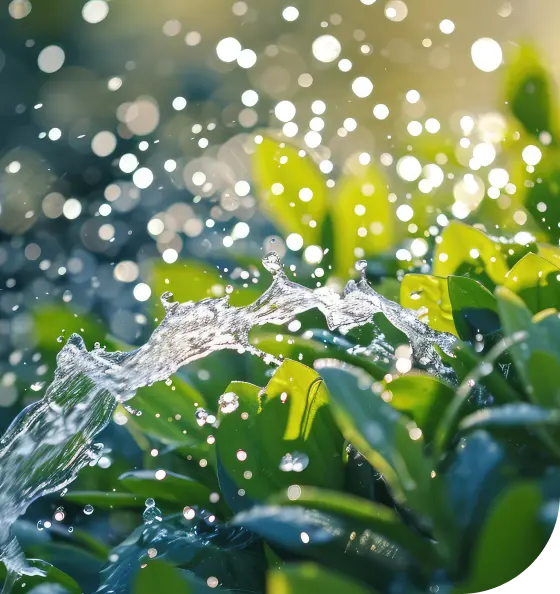Water Management
Never underestimate the importance of efficient water management. Especially for large-scale irrigation systems such as those used at golf courses, in planned communities, or on ranches or farms.
At Colorado Outdoor Environments, our top priority is water conservation. We effectively manage water through thoughtful design and the implementation of technology to monitor water usage.

What’s Involved in Water Management
The process of water management includes:
- Water Audit
- Water Rights and Procurement
- Assessment of Need
- Water Collection
- Treatment
- Conservation
- Distribution
Do you know where your water comes from, what the water quality is, and how to increase your water conservation efforts?
If you need help answering these questions and more, get in touch with us today. We’re Colorado’s premier, certified irrigation designers and have been for over 20 years.
How Much Water Are You Using?
A water audit is a multi-step process. It involves collecting various data such as the volume of water used, as well as an understanding of the equipment involved. An audit will look at the other resources you are using to extract, collect, and distribute water on your property. Other factors that help determine water usage include:
- Where water is used (sprinklers, pumps, spouts, faucets, etc…)
- Flow rate
- Ground moisture sensors
- Water temperature
- Filtering (if any)
How to Know If You’re Overwatering
In a residential property, signs of overwatering can include discolored grass, too much thatch, or mushy soil. But on a large-scale property, such as a golf course or a subdivision, how can you tell if you’re using too much water?

An overwatered landscape might actually show a lack of growth because everything is waterlogged. Installing a moisture sensor can give you a look into the soil to see how much of the soil is saturated. Even without a meter, you can tell an area is overwatered if the soil is muddy and can’t be rolled into a clean ball.
As for an overwatered golf course? Well, we’re pretty sure the golfers will be able to let you know! If the putting green is soggy, the grass suffers from a lack of oxygen in the soil. This will reduce vigor and create shallow roots that golfers will hate.
Colorado Outdoor Environments can help you reduce water consumption and avoid overwatering. Read on to find out more about how we can help.
How Much Water Do You Need?
Depending on property use, you need to determine how much water the land needs to thrive. The climate, vegetation, and size of the land will dictate how much you need to have flowing through your irrigation system.
For example, a golf course can use an average of 2.08 billion gallons of water every day. And while many courses across the US use recycled water for irrigation, it still adds up to a significant amount.
At home, if you use a ⅝-inch hose with a sprinkler head to water for one hour, you’ll use about 1,020 gallons of water. Multiply that by two to three times per week, and you’re consuming about 12,240 gallons of water per month. But now’s the time to ask yourself: do you really need that much?
Our team of designers can help you with water management needs, including calculating how much water you need on your property, whether it’s agricultural, commercial, or large-scale residential. Our blueprints show you detailed solutions that are designed to save you water and money for years to come.
The Benefits of Using Recycled Water
For non-potable (drinking) water needs such as irrigation,, using recycled water can reduce fresh-water consumption by 40%.
The Environmental Protection Agency (EPA) recommends the following water management techniques to reduce water consumption:
- Meter / Measure / Manage
- Optimize Cooling Towers
- Use Water-Smart Landscaping and Irrigation (this is where COE comes in!)
- Reuse Water (when applicable)
- Recover Rainwater
Let’s see how we can implement some of these and more in your Colorado irrigation system.
Making the Most of Limited Access to Water with Colorado Outdoor Environments
Besides opting for artificial grass, how can you make the most of limited access to water and water resources? Whether it’s because you’re sourcing from a well or have restricted water usage rights in your area, it’s important to make a little bit of water go a long way to maintain compliance and do what’s right for the environment.
As your one-stop shop for all irrigation needs, here’s how COE can help:
- Consulting regarding water needs
- Design a custom irrigation system with the right materials
- Ensure installation doesn’t create situations where turf and trees are competing for water
- Incorporate Smart Technology such as moisture sensors, real-time notices regarding leaks, and automatic shut-off if there’s a break in the line
- Water usage charts and graphs
- Flow and pressure sensors
- Water schedule based on site data
Careful maintenance of an irrigation system can also ensure you’re not wasting a single drop of water, whether there’s a short-term water shortage or a long-term water conservation issue at hand. Irrigation water should be used intentionally to keep your property beautiful and functional without sacrificing practicality.

Schedule a Consultation
Colorado Outdoor Environments prides itself on working with clients for over 30 years to meet and exceed their irrigation needs by creating simple, efficient water solutions. We have learned that conservation and proper irrigation leads to improved overall long-term landscape health for our clients.